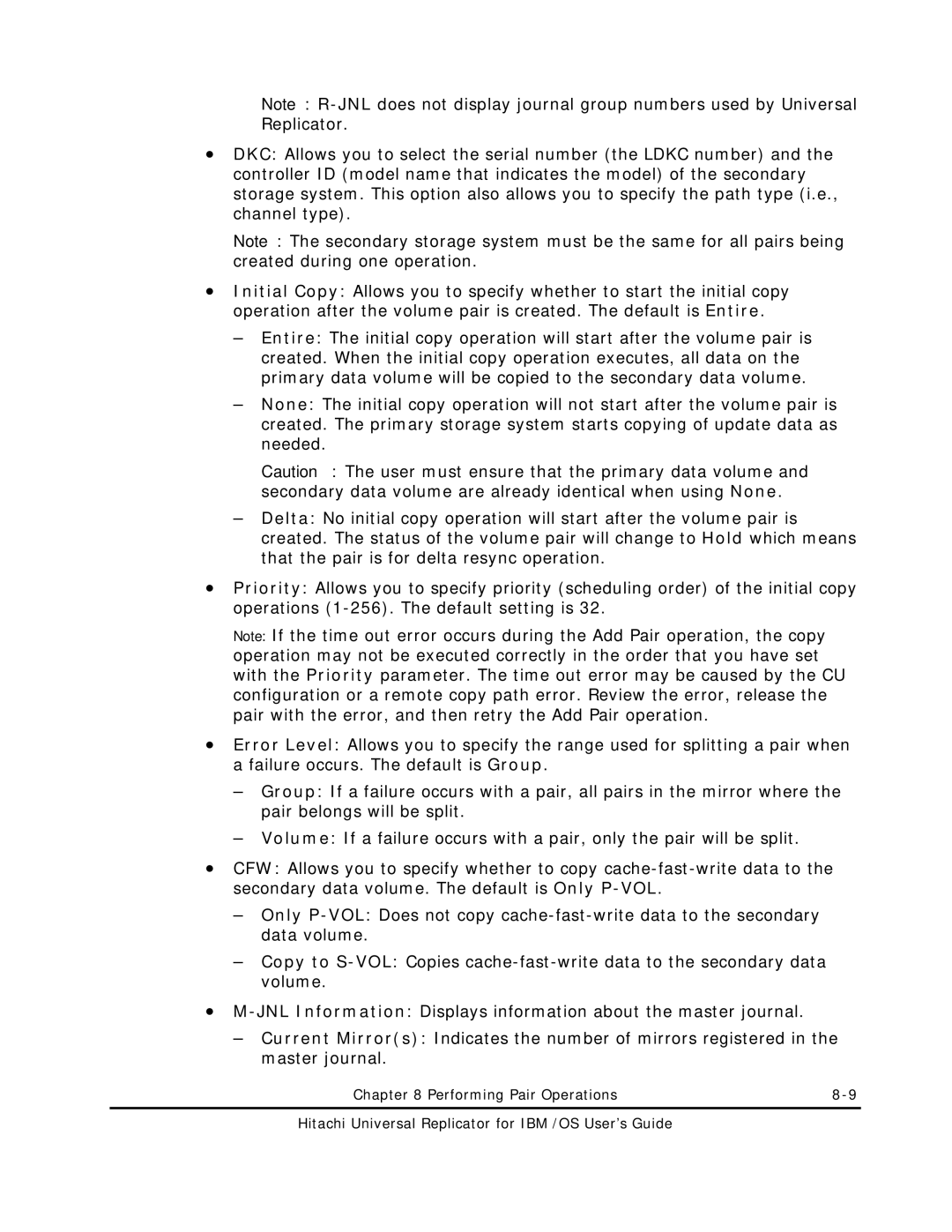Note:
•DKC: Allows you to select the serial number (the LDKC number) and the controller ID (model name that indicates the model) of the secondary storage system. This option also allows you to specify the path type (i.e., channel type).
Note: The secondary storage system must be the same for all pairs being created during one operation.
•Initial Copy: Allows you to specify whether to start the initial copy operation after the volume pair is created. The default is Entire.
–Entire: The initial copy operation will start after the volume pair is created. When the initial copy operation executes, all data on the primary data volume will be copied to the secondary data volume.
–None: The initial copy operation will not start after the volume pair is created. The primary storage system starts copying of update data as needed.
Caution: The user must ensure that the primary data volume and secondary data volume are already identical when using None.
–Delta: No initial copy operation will start after the volume pair is created. The status of the volume pair will change to Hold which means that the pair is for delta resync operation.
•Priority: Allows you to specify priority (scheduling order) of the initial copy operations
Note: If the time out error occurs during the Add Pair operation, the copy operation may not be executed correctly in the order that you have set with the Priority parameter. The time out error may be caused by the CU configuration or a remote copy path error. Review the error, release the pair with the error, and then retry the Add Pair operation.
•Error Level: Allows you to specify the range used for splitting a pair when a failure occurs. The default is Group.
–Group: If a failure occurs with a pair, all pairs in the mirror where the pair belongs will be split.
–Volume: If a failure occurs with a pair, only the pair will be split.
•CFW: Allows you to specify whether to copy
–Only
–Copy to
•
–Current Mirror(s): Indicates the number of mirrors registered in the master journal.
Chapter 8 Performing Pair Operations |
